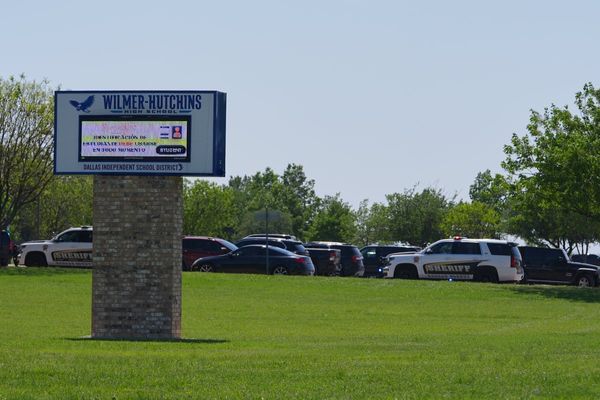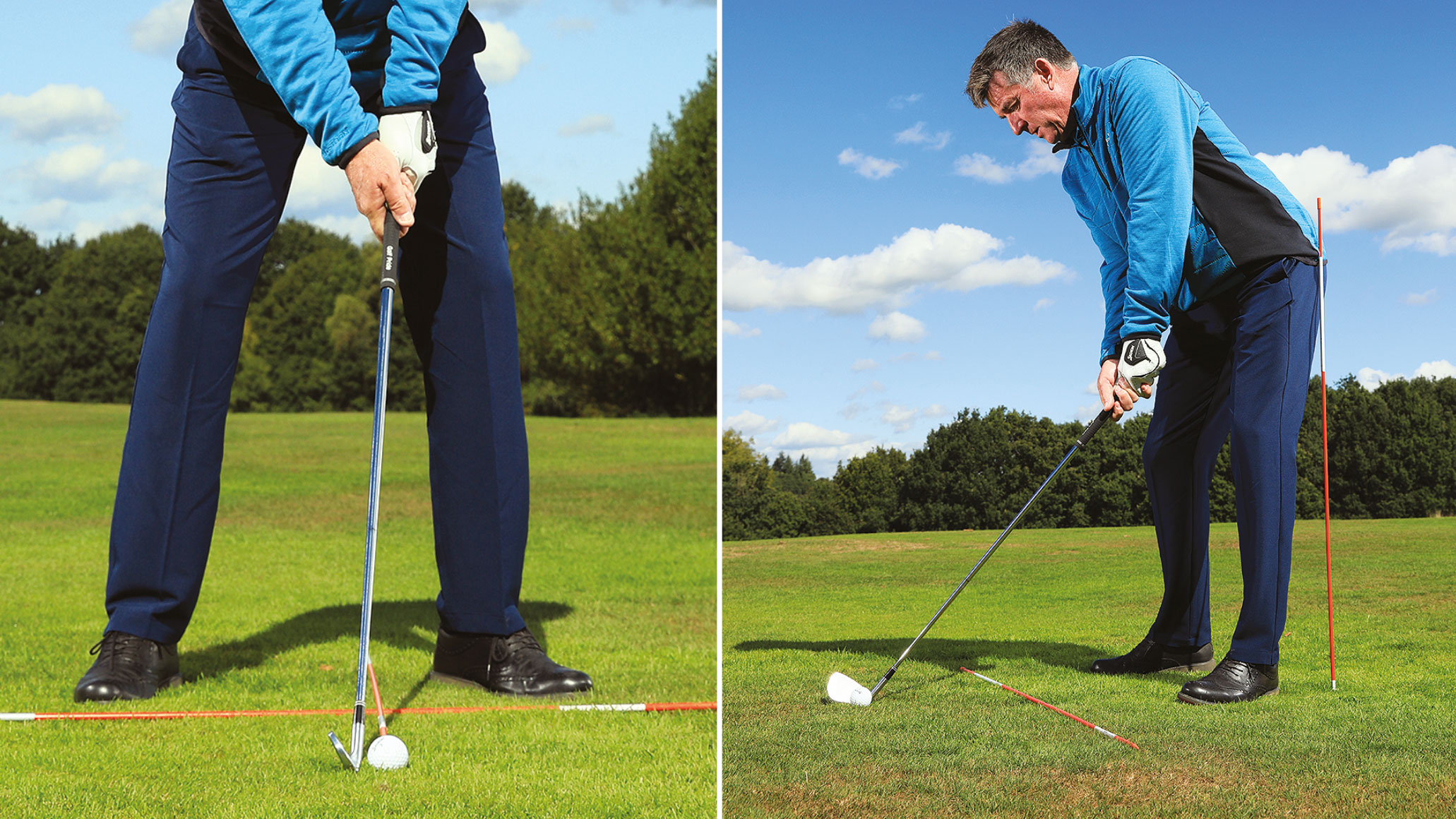
There are times when no matter what we seem to do, we have a poor ball-striking round. For a lot of mid to high handicappers, bad ball-striking comes in the form of 'fats' and 'thins'. In other words, the ball doesn't come off the center of the clubface (in some cases nowhere near it)!
Knowing how to hit an iron shot means having to focus in on those key fundamentals. such as the correct ball position and finding the perfect set-up. Here, Golf Monthly Top 50 Coach Clive Tucker demonstrates the causes behind these poor card-wrecking strikes, and offers some helpful advice on how to cure them and improve your ball-striking.
Fat And Thin Strikes Explained
Thin Shot Causes And Fixes
1. Poor ball position
Having the ball too far up towards the left instep is a common cause of thin shots. The problem is you simply can’t move your body far enough forward in the downswing to get the club interacting with the ground below the ball.
It can vary, but for me, a good ball position with an iron is a couple of balls inside the left heel. If the ball is on the left heel with a driver, it definitely wants to be one back with an iron. I’m not a fan of moving the ball back with the shorter irons – for me, it can stay in a similar position with every iron.
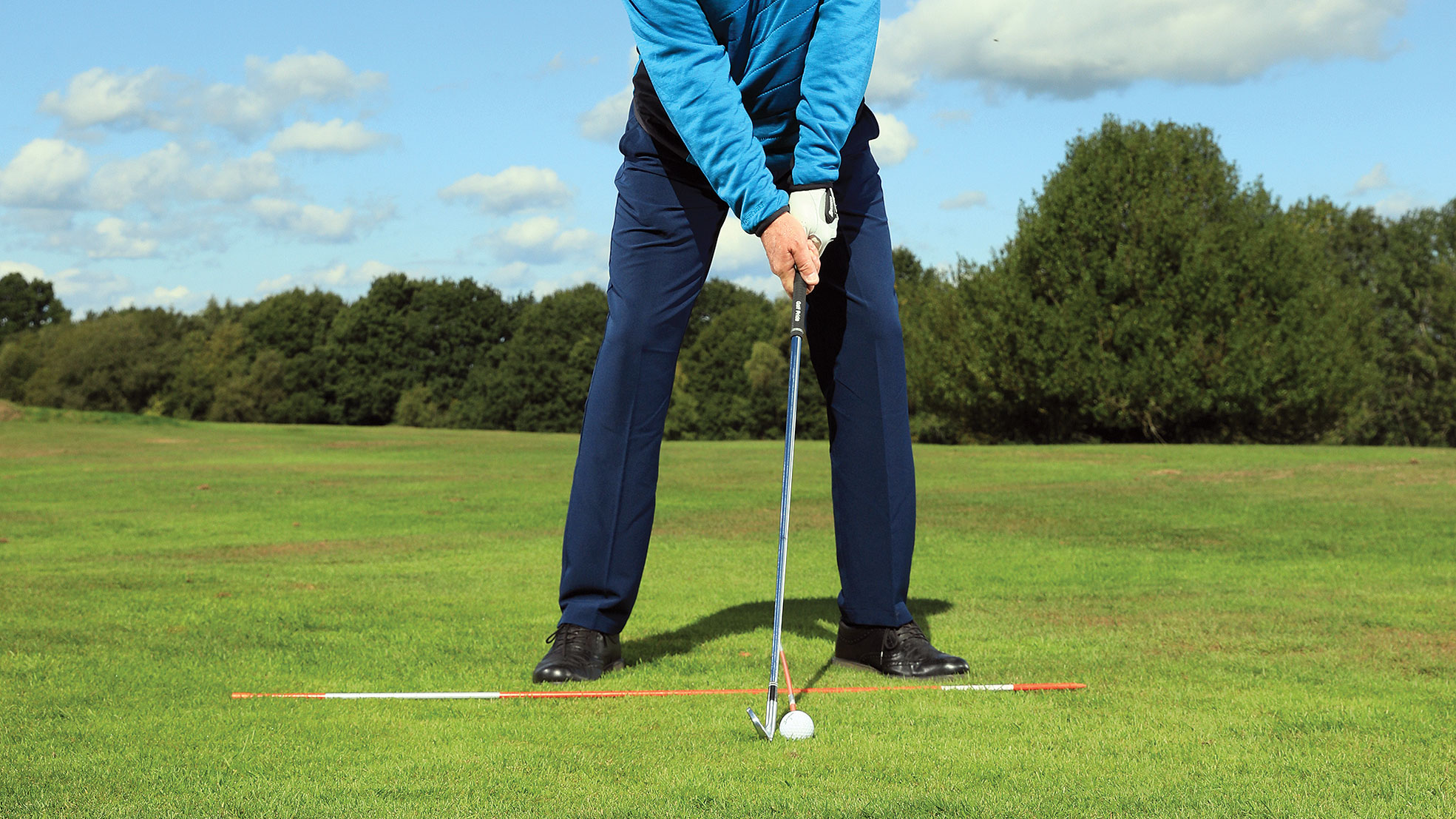
2. Standing up on downswing
Standing up on the downswing is another very common cause of fat shots. As the pelvis moves towards the ball halfway down you gain height, meaning the radius of the swing is no longer great enough to hit the ball cleanly.
This drill will help, although an umbrella is better than an alignment stick as you will feel it more easily. Stick the umbrella in the ground about three inches from your left buttock at address. Then work on moving the buttock on to the umbrella in your downswing.
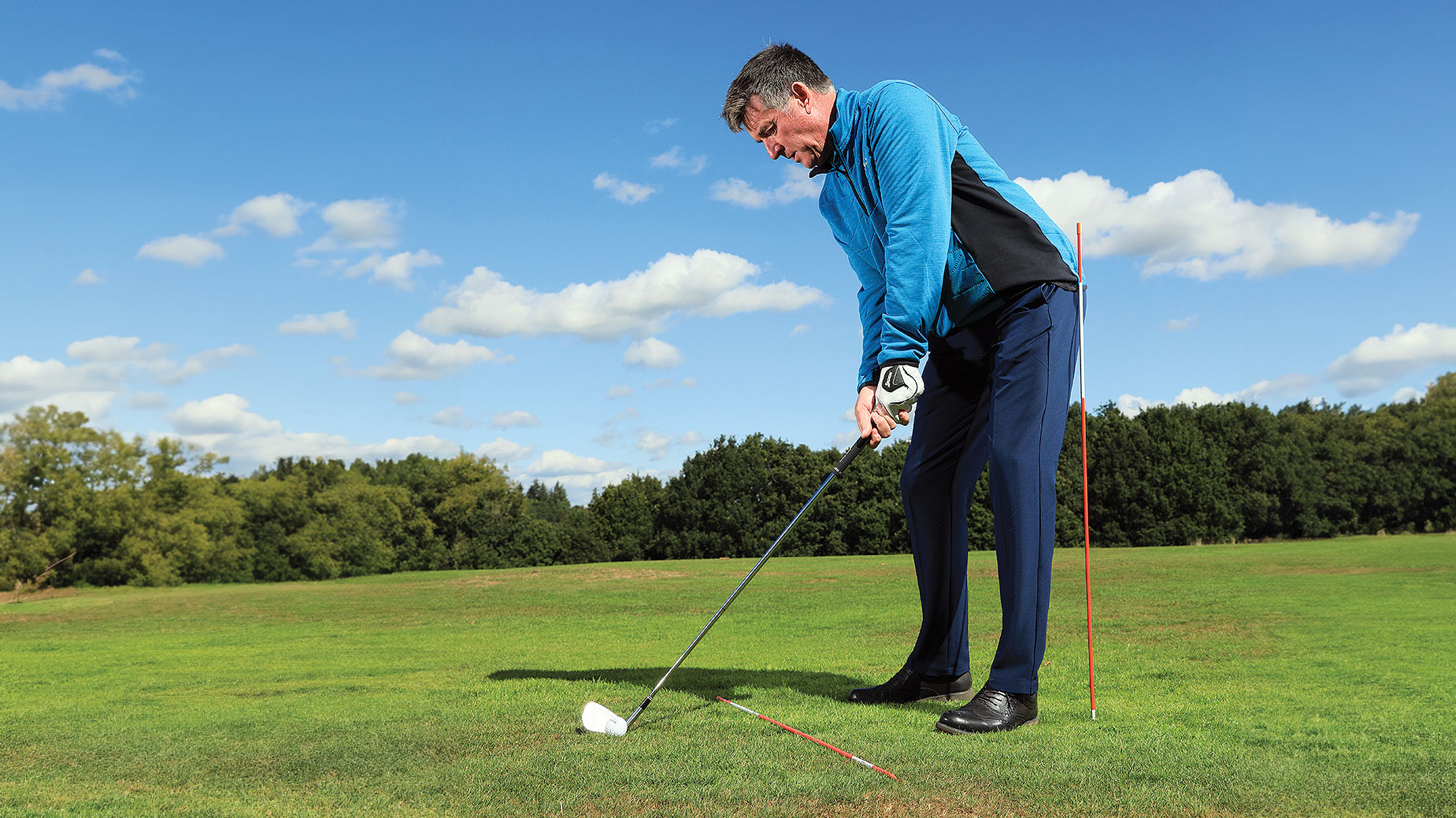
Fat Shot Causes And Fixes
1. Moving off the ball
Moving off the ball or swaying on the way back is a common cause of heavy strikes, as many people never move back across on the downswing and so strike the ground behind the ball. The best remedy is simply not to move off the ball in the first place! Checking out your shadow is an excellent way of showing you what’s going on.
Place one ball on your shadow’s head and another on its pelvis. The ball should remain in your head’s shadow as you swing, while the one in the pelvis should move a few inches across in the downswing. If the ball comes out of your head’s shadow, you’ll know that you’re moving off the ball.
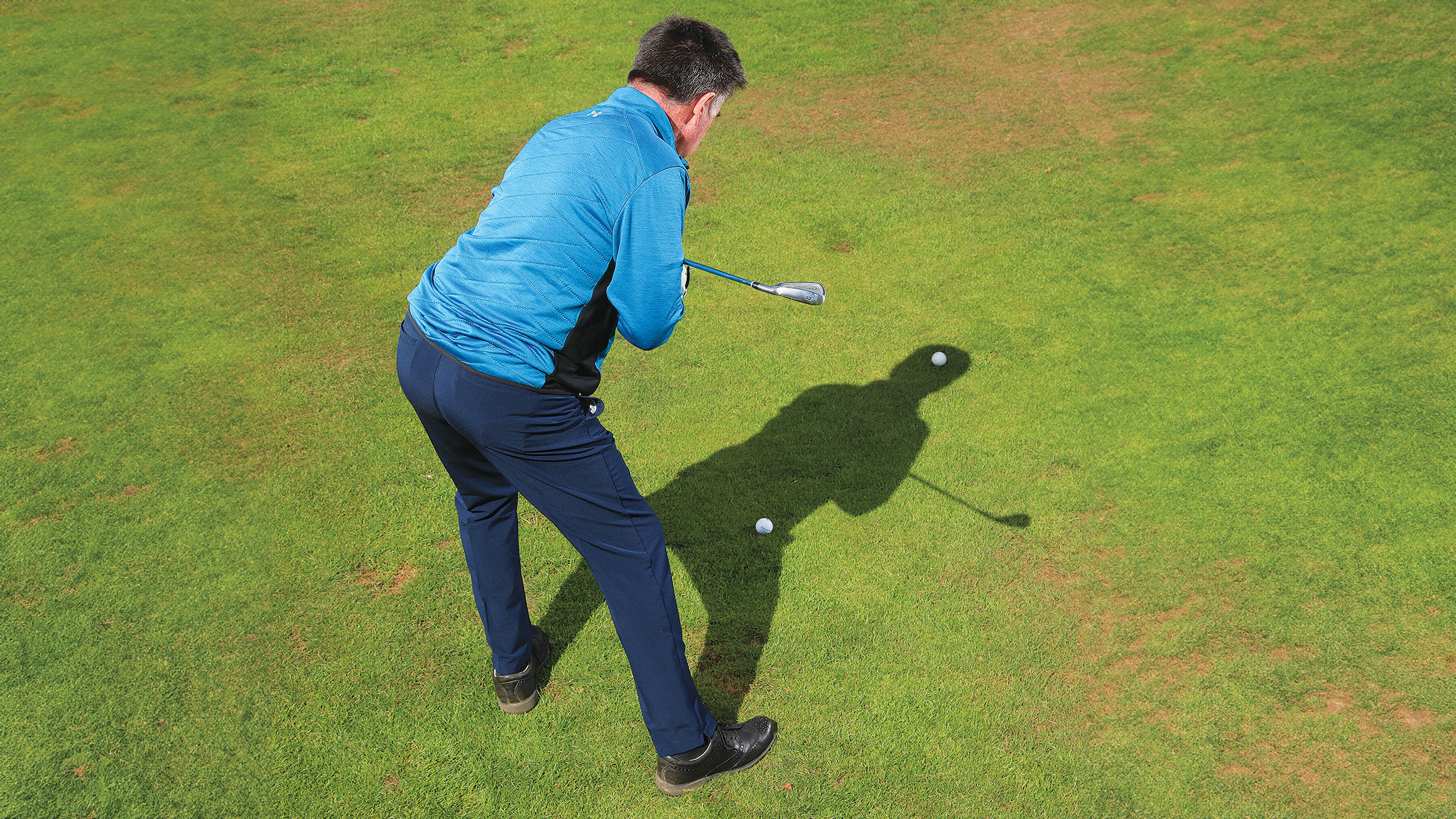
2. Casting the club
Casting the club on the downswing will often lead to heavy contact too. You might have a nice backswing, but your body then becomes a bit passive or stalls coming down. The arms and the elbow will then straighten too quickly, with your arc bottoming out behind the ball, rather than under or beyond it.
The remedy is to keep your chest over the ball, but more open. The right elbow will then go into extension – or straighten – much later, so you strike the ground ahead of the ball, not behind it. Your hips and shoulders should ideally be 30-40 degrees open at impact.
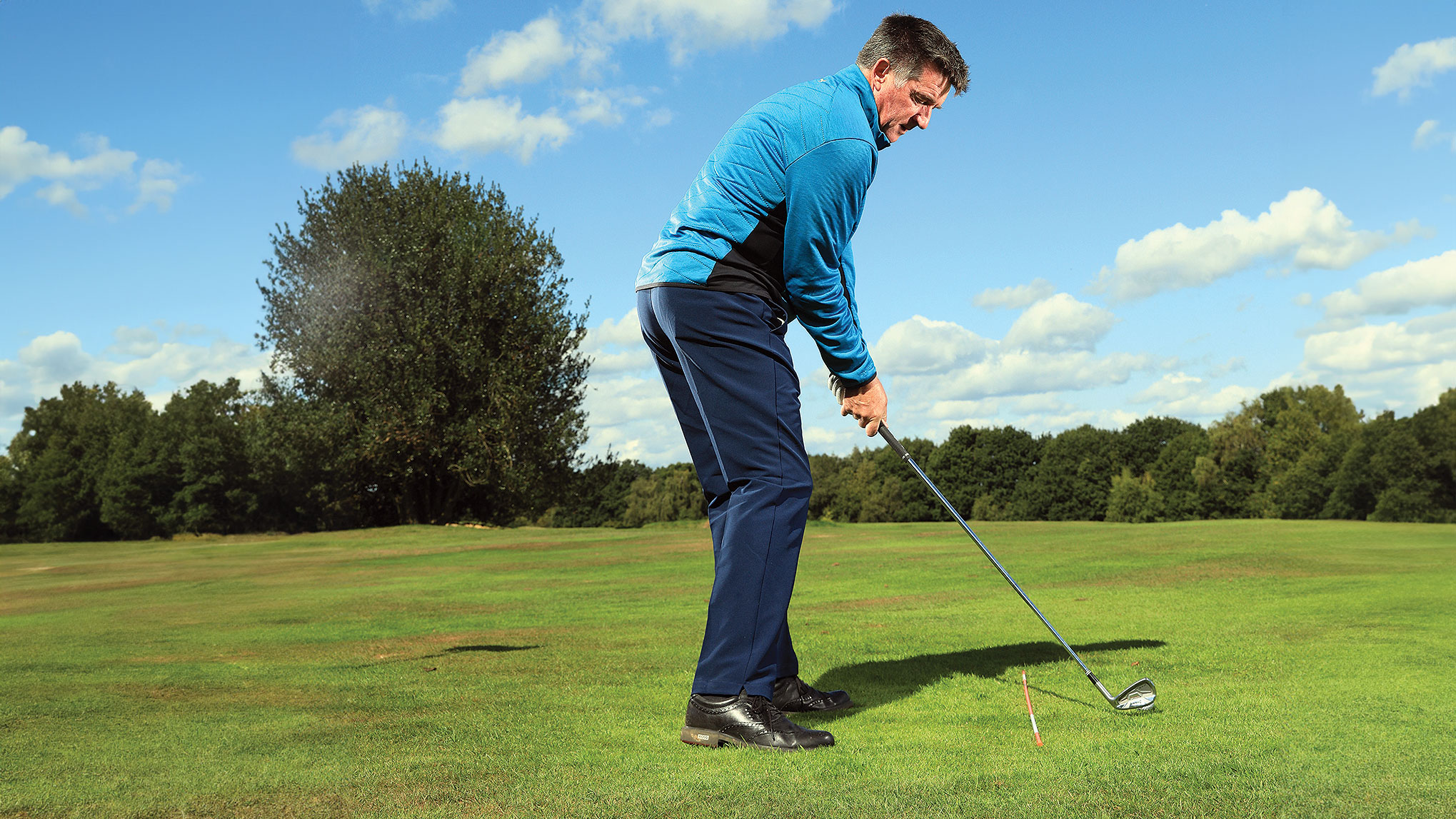
FAQs
Q: Why Am I Hitting My 3-wood Fat And Thin?
A: A lot of comes down to set-up. Position the ball in the middle of your feet, move your lead foot towards target approximately 3-4 inches, and then move your trail foot back to take your stance. Contact with the turf is necessary to execute the shot. However, it’s important not to try and get underneath the ball, as this often causes us to lean back and will result in topped and thin thinned shots.
